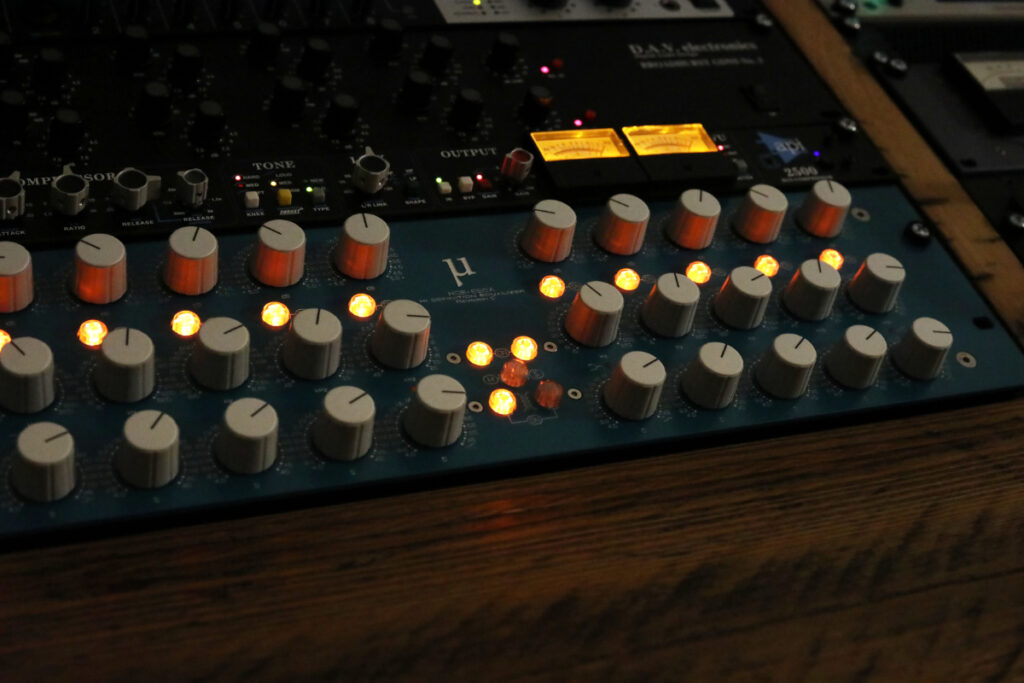Low frequency content presents one of the biggest problems in mixing and mastering. Getting it right is a fine balancing act: too little and your track lacks weight, too much and everything else is overwhelmed.
For many people, if you sort out the low end the rest will follow. Assuming you’ve got a monitoring chain that lets you hear the low end with some degree of confidence (more on that next time), how do you do it?
High pass filters in mixing
Most instruments carry some low frequency content in the signal, but other than the kick and the bass you don’t really need anything else down there.
One of the most useful mixing tips you will ever learn is to high pass filter everything except the bass and the kick.
- Find the cleanest EQ you’ve got – I use Fabfilter’s Pro-Q but your DAW’s stock EQ will probably do fine.
- Sweep up on each instrument until you hear a difference.
- Scale it back until you don’t.
This gets rid of all the ‘junk’ bass that’s cluttering up your low end, as well as freeing up energy for higher frequencies. As a rule of thumb, 100Hz is pretty safe, but you can often go higher on some instruments depending on how dense the mix is.
Clearing space for the kick
Once you’ve got everything else out the way, you might still find your bass masking your kick.
- Use a frequency analyser (try BlueCat’s free FreqAnalyst if you don’t already have one) to see what frequency your bass drum is at.
- Make a 2-3dB cut in the bass instrument at that frequency. Keep the Q fairly gentle (you’re at the deep end).
- You may need to make a compensatory boost higher up.
Then of course you can always use a sidechain compressor on the bass using the kick as the key. But that’s another post for another time.
High pass filters in mastering
You might have heard of the infamous ’30Hz rumble cut’. Often advocated in dance circles, it is common practice to put a high pass filter at 30Hz across the master buss for testing in clubs, to get rid of any unsightly low frequencies that will only show up on the biggest of subs.
This is certainly a good idea when you can’t hear that far down on your monitors. But as with any master processing, you have to be more careful with high pass filters across the master buss than on individual tracks.
For starters, if you’ve been filtering conscientiously while mixing, you shouldn’t have too much unwanted noise down there anyway, and the extra cut might take too much out.
Additionally, any filter you use will affect frequencies higher up in the spectrum by virtue of the phase shift inherent in any (non-linear) EQ process. The alternative is to use a linear phase filter, but again, this comes with its own baggage – I often find linear phase processors make things sound ‘smaller’ and make transients softer.
For what it’s worth, I find the filters in the Sonnox EQ to be pretty good. Steinberg’s PostFilter (in Nuendo and Wavelab) is great – particularly for very steep slopes. Fabfilter Pro-Q can do the job sometimes, and is very useful when linear phase really is needed.
But I nearly always use the butterworth or bessel curve in the TC Electronic MD3. The difference is startling. The whole track becomes more open and the bass very often sounds stronger as a result of the cut. The same can’t always be said for the others.
Bottom line? Don’t use any old EQ you have lying around for a master buss rumble cut. Try out everything you’ve got and see what works best.
Next time – making bass translate.


